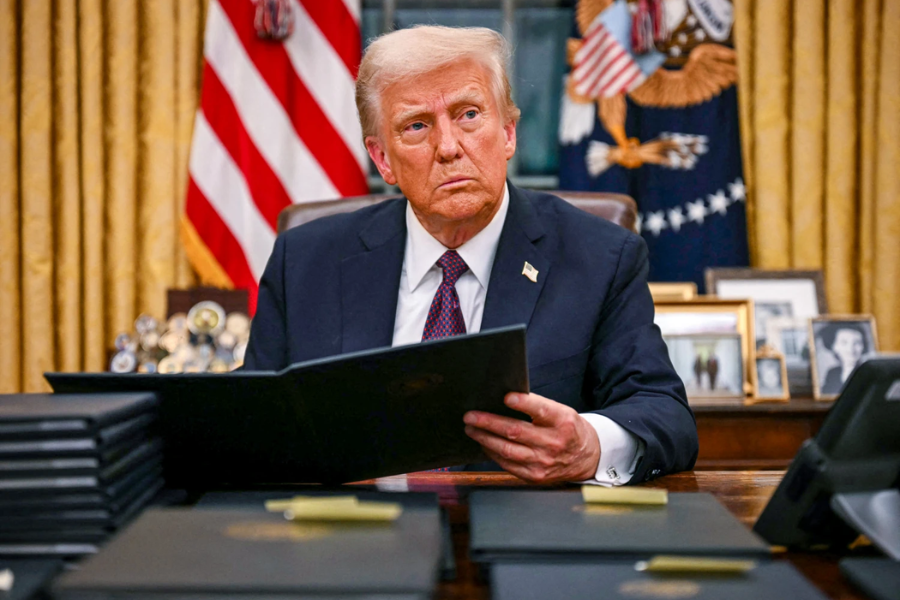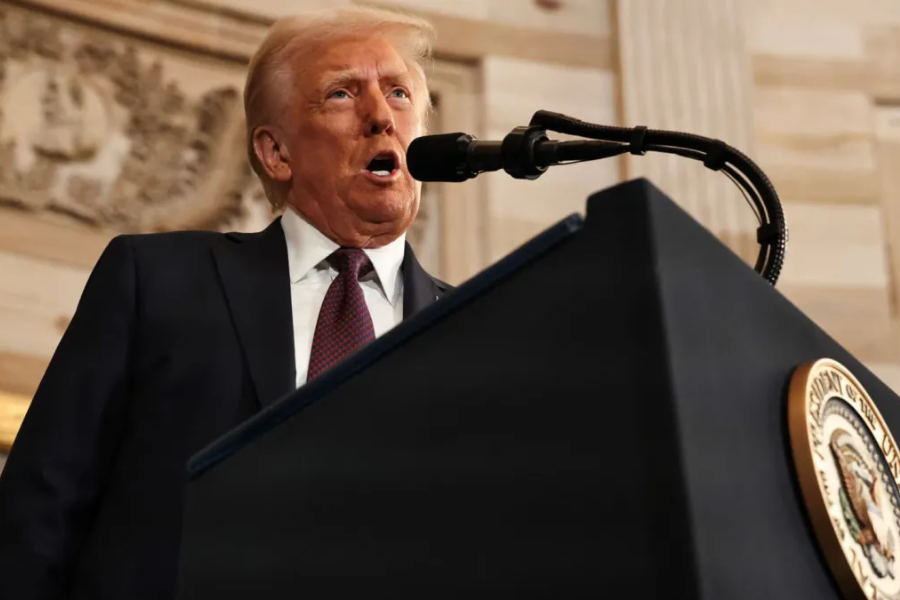Introduction
A pillar of workplace justice in the US has long been the Equal Opportunity in Employment (EEO) framework, which guarantees that people are not subjected to discrimination on the basis of their race, religion, gender, or other protected traits. Debates concerning whether Donald Trump repealed or weakened EEO protections were caused by the administration’s many alterations to labour and employment laws during his presidency (2017–2021). This article examines Trump’s stance on roughly employment, the changes in policy that transpired while he was president, and what that means to feed workers’ rights.
Understanding the Equal Employment Opportunity (EEO) Framework

The United States’ Equal Employment Opportunity laws are derived from a number of historic laws, such as:
- Title VII of the the Civil Rights Act of 1964 (also known as forbids discrimination in the workplace on the grounds of race, colour, religion, sex, or national origin.
- Employees with disabilities are protected from discrimination by the Americans with Disabilities Act (the substance).
- Regardless of gender, the Equal Pay Act of 1963 mandates equal compensation for equal labour.
- Employees over 40 are shielded from age-based discrimination by the Age It in Job Employment Act (ADEA).
The Equal Employment Opportunity Commission (EEOC), an impartial organisation tasked with peering into complaints, giving guidance, and guaranteeing compliance, enforces these laws. Trump could not explicitly repeal these laws, but the policies of his rule as president fundamentally changed the way they had been applied.
Trump’s Approach to Equal Employment Policies
1. Weakened EEOC Enforcement
The EEOC’s diminished enforcing was one of the most major alterations under Trump. Investigations and case resolutions decreased as a result of his administration’s attempts to cut independence funding. Employees found it more difficult to get justice in cases of harassment at work because the EEOC was unable to pursue as many allegations of bias due to a lack of resources.
Additionally, Trump shifted the EEOC’s priorities from aggressive enforcement to voluntary compliance indicates by appointing managers who seemed to been more employer-friendly.
2. Rollback of Diversity and Inclusion Initiatives
The Trump administration limited federal diversity training initiatives. He issued the Executive Order 13950 in September 2020, prohibiting federal agencies, contractors, and grantees from holding diversity education sessions that covered topics such as gender along with racial privilege. Civil rights organisations strongly objected to this action while claiming that it undermined efforts to prevent discrimination in places of employment.
Even though Joe Biden, the vice president, cancelled the order in 2021, it had a chilling effect on corporate diversity programs because many businesses were hesitant to begin using them because of uncertainty regarding the law.
3. Restrictions on Workplace Protections for LGBTQ+ Employees
In Bostock v. Clayton County, which was decided in 2020, the U.S. Supreme Court held that LGBTQ+ employees were bound by Title VII’s prohibitions against gender bias. The Trump administration, however, had previously contested this interpretation and sought to reduce LGBTQ+ employees’ protections at work.
Citing religious freedom as a reasoning, Trump’s Department of Justice and the Department of Health and Human Services (HHS) promoted regulations that imposed on religious employers greater discretion in refusing the LGBTQ+ community applicants. The administration’s position demonstrated an intention to limit the reach of EEO protections in specific situations, even though the Supreme Court’s decision ultimately upheld LGBTQ+ protections.
4. Changes to Federal Contractor Rules
Strict affirming action and equal treatment regulations should be followed by federally contracted companies. Nevertheless some of these laws were changed under Trump’s handling, especially in ways that gained religious institutions.
In one example, the Secretary of Labour granted government contractors more religious exclusions in 2019, helping them to base hiring decisions on their personal beliefs. This, according to scholars, allowed certain organisations to act bias against women, LGBTQ+ people, along with other protected communities under the pretext of freedom from religion.
5. Weakened Wage Gap Reporting Requirements
In order that assist identify wage disparities, the administration of Barack Obama enacted a rule requiring big enterprises to report detailed pay data by gender and race to the EEOC. The Trump administration repealed this requirement in 2016 on the grounds that it was too onerous for companies.
This ruling made it more challenging for supporters and regulators to monitor and close pay disparities, especially those that impact minorities and women. The action was viewed as a blow to initiatives to advance gender equity in reimbursement.
Did Trump Revoke the Equal Employment Opportunity?
The administration of President Trump made substantial changes to the way EEO laws were enforced, even though he did not altogether repeal them. His policies made it more difficult for workers to combat bias in the workplace by weakening enforcement agencies, reversing diversity training, increasing religious exemptions, and reducing their gathering of data on pay disparities.
The Trump administration’s reforms were frequently presented as encouraging business-friendly policies and cutting back on spying by the government. Critics countered that these policies particularly favoured employers over workers’ rights.
The Long-Term Effects of Trump’s Policies on Workplace Equality

1. Reduced Federal Oversight
The reduction in the federal oversight of discrimination in the workforce cases was one of the most important consequences of Trump’s labour legislation. As a result, employers claimed of prejudice endured less duty of care, postponed resolutions, and fewer investigations.
2. Increased Corporate Hesitation on Diversity Programs
A lot of companies re-examined their policies on diversity and inclusion initiatives in the wake of the temporary halt on specific diversity training programs and a wider backlash against discussions about systemic racism in the workplace. Even though the ban was subsequently lifted, some companies scaled back or prevented these programs out of worry over potential legal ramifications.
3. Challenges for LGBTQ+ Workers
Trump’s broader laws, like expanded religious exemptions, created uncertainty and potential loopholes that could allow discrimination in some workplaces, even after the highest court in the land ruled at favour of LGBTQ+ workplace protections. As a result, some the LGBTQ+ community staff are now more vulnerable to discrimination at work.
4. Slower Progress on Pay Equity
The administration of President Trump made it more difficult to monitor and address racial and a gender-based wage disparities by simplifying the requirements for collecting pay data. Employees found it harder to advocate for fair wages as a result of this action, which also slowed efforts to eliminate the wage inequality.
The Biden Administration’s Response
Many of Trump’s equal labour laws were swiftly undone by President Joe Biden after he took work in 2021. Revocation of Executive Order 13950 to restore diversity training initiatives in federal workplaces was one of the major measures implemented.
- giving the EEOC its funding and enforcement authority back.
- enhancing workplace safeguards to earn LGBTQ+ individuals and bringing federal policies into compliance with the ruling in Bostock v. Clayton County.
- To better monitor inequality in wage analysis should be resumed.
Although the long-term consequences of Trump’s decisions are still being felt in some sectors, those modifications have signalled a return to stricter enforcement of EEO protections.
Conclusion
The Equal Employment Opportunity laws had not been explicitly repealed by Donald Trump, but his administration did enact laws that made it harder to enforce them, restricted diversity programs, and increased employer exemptions. Those changes had a big impact on workplace equality, especially for under-represented groups like women, racial minorities, and LGBTQ+ employees.
Trump’s policies’ long-term effects emphasise how crucial federal supervision is to defending workers’ rights. Even though the administration of Vice President Joe Biden has taken steps to bolster and restore EEO protections, discussions about employer rights, diversity initiatives, and prejudice in the workplace will continue to influence American labour legislation going forward.
Stay updated with the latest business trends and insights on ExecuteBuzz.com.


